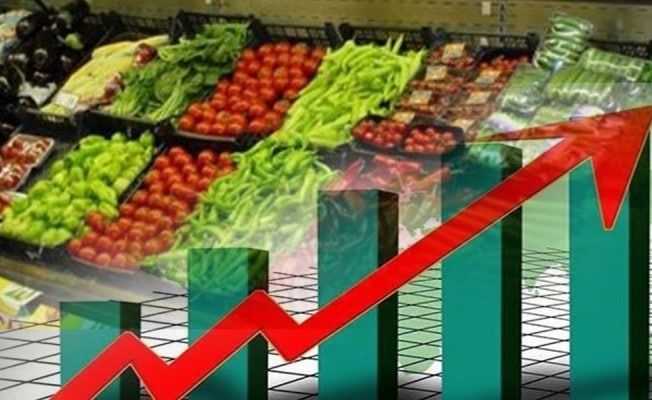

As of the early morning of October 14, the dollar rate has exceeded 9.10 liras following recent dismissals and new appointments at the Turkish Central Bank (CBRT). There have been ongoing exciting discussions on the exchange rate, such as the argument that the CBRT’s one-point interest rate cut on September 23 has not affected the observed depreciation of the lira following the decision, or the conception that improving the current account balance would alleviate the pressure on the exchange rate and ultimately affect inflation positively. Really? It is time to seek an answer to the following question: what are the main determinants of the movements in the exchange rate in a country like Turkey?
The most important thing is the foreign exchange supply and demand created by capital flows.
A phenomenon has attracted considerable attention in the literature for almost thirty years. Namely, the main factor of foreign exchange supply and demand is capital flows among countries rather than foreign trade. According to the data provided by BIS (Bank for International Settlements), the bank of central banks, the daily average of foreign exchange buying and selling resulting from capital flows in the world in April 2019 was 6.6 trillion dollars. On the other hand, the total foreign trade of countries in goods and services in 2019 was 24.9 trillion dollars (World Trade Organization data). In other words, the foreign exchange trade caused by the capital flows in four days is more than the foreign exchange trade caused by the trade in goods and services in a year. What is meant by capital flows is that buying and selling bonds or stocks of a country, withdrawing money from a deposit account in a country and depositing money into an account in another country, a company borrowing from a bank in another country or paying debts, and so on. The instructions given to the brokerage houses for such transactions lead to tremendous foreign exchange trade. Pesos or liras are converted to dollars or euros and vice versa.
What determines capital flows?
The primary determinant of foreign exchange supply and demand is capital flows. Accordingly, the difference between domestic and foreign interest rates is essential in determining the exchange rate. The reason is clear: fluctuations in these rates change the demand for, and the supply of, bonds, deposits, and the like of any country. For instance, you can sell the stock of a US company and buy the share of a Brazilian company. Alternatively, you change your borrowing behavior as a company. In addition to the interest rate differences, the foreign exchange rate in effect in the future, when you sell the bond or stock you have bought is also vital. After all, an American who possesses bonds in the lira will eventually convert those liras into dollars when selling that bond, on the way home. Hence, current foreign and domestic interest rates as well as the rate you expect to occur in the future are essential when you order your brokerage house to buy any bonds or stocks, or other financial assets.
Five critical determinants of exchange rate
In this context, five main factors determine the current value of exchange rates in any country.
1. The risk-free domestic interest rate,
2. Foreign interest rate (the Fed or ECB interest rate – mostly the former),
3. Expected exchange rate,
4. Country risk, and
5. Risk appetite in international financial markets.
Suppose that you expect the exchange rate to rise tomorrow. In that case, if you are hastily buying foreign currency today, the demand for foreign currency is increasing today. Should the majority behave as such, the exchange rate rises right away. Or, in another scenario, the demand for financial assets in the domestic currency of a country decreases when a sudden shift upsurges the country’s risk, leading to a sell-off of bonds or stocks of that country and eventually domestic currency received in such transactions converted into foreign currency. Ultimately, the domestic currency depreciates.
Sailing towards safe harbors
Additionally, as in the 2008-2009 global financial crisis, the global risk appetite may decrease. The bonds and stocks of the emerging countries may lose their attraction; they are disposed of as soon as possible and investors sail towards safe harbors. Consequently, the exchange rate rises.
From this perspective, it immediately becomes clear why the Fed’s interest rate hikes have adversely affected countries such as Turkey, Brazil, or South Africa. While the demand for US bonds increases, the appeal of financial assets of countries like us decreases. Consequently, it is easy to understand why foreign exchange rates spiked when Trump threatened Turkey with his menacing tweets of July and August of 2018. Turkey’s risk soared, the attractiveness of its financial assets decreased, the demand for foreign currency elevated. Or, in the fifteen-day period, from the day the CBRT cut rates by 100 basis points at their September 23 meeting, and the day before the President’s statement on Syria, it becomes clear why the exchange rate basket, which consists of half a dollar and half a euro, increased by 2.2 percent against the lira.
The main concern of the public is the cost of living
Do not get me wrong, what I have stated above does not mean that the developments in the current account do not have repercussions on the exchange rate. It is essential; nonetheless, that importance remains limited compared to the interest rate differential, country risk, and expectations. In this context, it is not easy to understand why the CBRT put the current account in the foreground in the reports and resolutions or the speeches made by the CBRT officials. It would be much more beneficial for all of us if they focused on inflation and the main factors affecting it instead. The developments in the current account balance do not concern the general public; their problem is the cost of living. For instance, winter is coming. Energy prices have already been rising in dollar terms. Furthermore, suppose that there is a depreciation pressure on the domestic currency due to the monetary policy mismanagement. In that case, the energy costs rise to an unbearable extent in lira terms.


